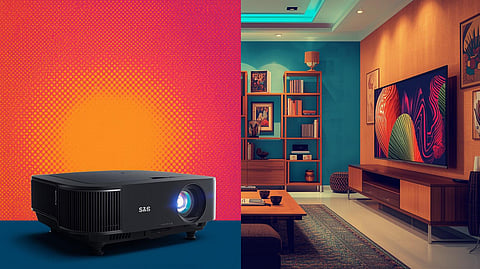

Choosing between a projector and a TV for home entertainment involves more than picture quality — it also impacts sustainability. This article compares energy consumption, material usage, and product lifespan of modern projectors and large-screen TVs, offering practical insights to Indian consumers seeking eco-friendly home viewing options. Learn which device aligns better with green living goals, and discover actionable tips to minimize environmental impact while enjoying your favorite content.
In today’s world, where sustainability is becoming a key consideration in consumer choices, selecting eco-friendly home entertainment devices is crucial. For Indian households deciding between a projector and a large-screen TV, understanding the environmental impact of each can guide smarter, greener purchases. This article delves into the energy consumption, material usage, and lifespan aspects of modern projectors and TVs, helping you make an informed decision.
Energy Consumption
Energy usage is a primary factor when evaluating sustainability. TVs, especially large 4K LED or OLED screens common in India’s urban markets, typically consume between 80 to 200 watts depending on size and technology. OLED TVs, while offering superior picture quality, can be slightly more energy-intensive than LED TVs. In comparison, modern projectors generally consume less power, with most models ranging from 100 to 250 watts during operation. However, the total energy footprint depends on usage patterns and ambient lighting.
Projectors require a dark or dim environment for optimal viewing, which may reduce electricity spent on room lighting. Conversely, TVs are versatile in various lighting conditions but may encourage longer screen times due to ease of use and picture clarity. To reduce energy consumption, Indian consumers can opt for projectors with LED lamps, which last longer and use less power than traditional lamps. Additionally, TVs with energy-saving modes or certifications like BEE (Bureau of Energy Efficiency) ratings help save electricity.
Material Usage and Environmental Footprint
Manufacturing both TVs and projectors involves complex supply chains, including rare earth elements, plastics, glass, and metals. Large-screen TVs typically use more materials overall due to their size and built-in components like speakers, tuners, and multiple circuit boards. Projectors, being more compact, might use fewer materials but often rely on disposable lamps or bulbs, which require regular replacement and contribute to electronic waste.
A key consideration is the sourcing of materials and end-of-life disposal. Indian consumers should look for products with take-back or recycling programs to minimize landfill impact. For example, some TV manufacturers and electronics retailers in India now offer recycling options. Choosing projectors with longer-lasting LED lamps reduces waste compared to traditional mercury vapor lamps.
Product Lifespan and Durability
Lifespan influences sustainability by extending usage and reducing waste frequency. Modern TVs usually last between 7 to 10 years with proper care; LED TVs tend to outlast older plasma models. Projectors’ lifespan depends heavily on the lamp type. Traditional lamps may last 2,000 to 5,000 hours, while LED or laser projectors can exceed 20,000 hours, equating to many years of use.
For Indian homes, where power fluctuations and dust can affect electronics, durability is important. TVs generally require less maintenance, while projectors may need periodic cleaning and lamp replacements. Selecting projectors with robust dust filters and voltage stabilizers can enhance lifespan.
Practical Use-Cases for Indian Homes
Projectors: Ideal for spacious living rooms or home theaters where ambient light can be controlled. They offer a cinema-like experience with a large image size at a lower cost per inch compared to TVs. LED or laser projectors are preferable to reduce energy use and waste. For instance, a family in Pune can enjoy weekend movie nights with a projector, benefiting from energy savings and a smaller device footprint.
TVs: More suited for everyday use in well-lit areas and smaller rooms. Smart TVs with energy-efficient panels and BEE ratings help reduce electricity bills. A middle-class household in Delhi might prefer a 55-inch LED TV for its convenience and minimal maintenance.
Tips to Enhance Sustainability
- Choose devices with energy efficiency certifications.
- Use timers or smart plugs to limit screen time and avoid energy waste.
- Regularly clean and maintain devices to extend lifespan.
- Prioritize products with take-back or recycling policies.
- Consider second-hand or refurbished electronics.
Conclusion
When comparing projectors and TVs from a sustainability perspective, both have pros and cons. Projectors generally consume less power and use fewer materials but may require lamp replacements. TVs offer durability and versatility but can have higher energy use depending on size and technology. Indian consumers should assess their usage patterns, space, and preferences alongside sustainability factors. Opting for energy-efficient models, proper maintenance, and responsible disposal will ensure your entertainment setup aligns with green living values.
